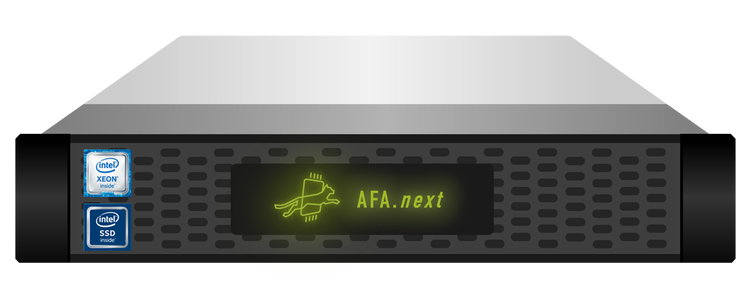StorOne's Optane-Flash Array Adds Intel Optane To Enterprise Storage
StorOne's new AFAn array combines its software-defined storage technology with Intel servers and both Optane and QLC flash storage technologies to offer better performance than other all-flash storage at a lower cost.

Software-defined storage technology developer StorOne next week plans to start shipping a new version of its software that, in combination with Intel servers and storage devices, will bring the power of the Intel Optane platform to enterprise users.
StorOne and Intel collaborated on developing the All-Flash Array.next, or AFAn, which combines Intel servers, three to eight high-performance Intel Optane storage, and low-cost Intel QLC SSDs with StorOne's S1 software, said George Crump, chief marketing officer for New York-based StorOne.
This is the first time in 10 years the storage industry has upgraded the technology in all-flash arrays, Crump told CRN.
[Related: The 10 Hottest Data Storage Startups Of 2019 (So Far)]
"Customers are looking for high-performance storage," he said. "All-flash arrays have been the only alternative. But we now have a lower-cost alternative."
It is a bold move for StorOne, said Howie Evans, vice president of Dallas Digital Services, a Colleyville, Texas-based solution provider and StorOne channel partner.
"StorOne for us will open up new opportunities," Evans told CRN. "Intel Optane has the potential to be a great replacement for a lot of storage technologies out there."
Optane technology stems from the joint development of the 3D XPoint memory technology by Intel and then-partner Micron Technology. 3D XPoint memory is a non-volatile memory that fits between higher-performance but expensive DRAM memory and the lower-cost ubiquitous NAND technologies common in SSDs and all-flash storage systems.
The combination of Intel Optane drives and multiple QLC drives gives incredibly high performance on the front end with a high-performance backend, Crump said.
"It writes to the Optane tier, and not to cache," he said. "So we're offering a minimum of three Optane drives, to a maximum of eight, for resiliency. Data can sit on the Optane tier safely for as long as the customer needs it. When capacity hits the high-water mark, the data is moved as a sequential write to the QLC tier, which is important because that's how QLC technology works best."
QLC flash storage records data almost as fast as Optane does, especially when the data is written as a block, Crump said.
"So there's no need to move data immediately to QLC," he said. "Data reads come off of the QLC tier at high performance. There's literally no performance hit when reading from the QLC tier. So Optane acts as a write shock absorber."
As a result of the combination of Optane and QLC, customers will see a bump in performance combined with a drop in cost compared to traditional all-flash storage arrays, he said.
About 90 percent of the components in StorOne's AFAn array are from Intel, including the server and the Optane and QLC storage, Crump said.
"We're just the software powering it all," he said. "Other vendors could potentially do the same with their software, but no other vendor could get the performance out of the system that we can. We're pulling about 85 percent of the raw performance of the drives, while other vendors typically pull about 20 percent. And while other vendors also use Intel Optane technology, they typically use it just for high-performance cache."
The StorOne AFAn arrays feature file, block, and object storage capabilities, and can use Fibre Channel, iSCSI, NFS, SMB, and S3 Object protocols simultaneously, Crump said.
"This is not a me-too product," he said. "This is totally different. We're offering the ability to scale down the data center environment. One reference customer originally had six servers, and now has four after deploying the AFAn. And the customer cut SQL licensing costs by $80,000 per year."
Evans said the thing he likes most about working with StorOne is the fact that its technology was built to word on any hardware.
"Finding software-defined storage with the IOPs StorOne offers and the services it includes is important," he said. "StorOne really stacks up well against the competition. With the AFAn, the important thing is not just the IOPs. It's using Optane as storage and not as cache while offering protection against media failure."
StorOne works exclusively with indirect channel partners, Crump said.